Arrigo Boito Conservatoire of Music
Strada del Conservatorio, 27/a, Parma
Founded in 1888 in the former convent of the Carmine and dedicated to Arrigo Boito, the Conservatorio has its origins in the Music school established by Marie Louise of Austria in 1819 and enlarged in 1825, where students could learn how to play an instrument: violin, oboe, flatus, double bass, clarion and bassoon, piano and composition, cello, horn, trumpet and trombone. Among the students who attended the school, it is worth to remember: composer and orchestra conductor Giovanni Bolzoni (1841-1919), conductor Cleofonte Campanini (1860-1919), the great conductor Arturo Toscanini (1867-1957) and Ildebrando Pizzetti (1880-1968).The Music Library of the Conservatorio, created in 1889, is a specialized section of the Palatine library. Among its funds are kept: the music archive of the R. School of Music; music archive of the Bourbon-Parma family; music archive of Marie Louise of Austria; music books and music literature from funds of the Palatine Library (among them the Libro di Vihuela by Luis Milan, the Fronimo by Galilei); music archive of the Earl Stefano Sanvitale. The palace, of remarkable architecture, is made from a former convent, with a cloister that is worth a visit.
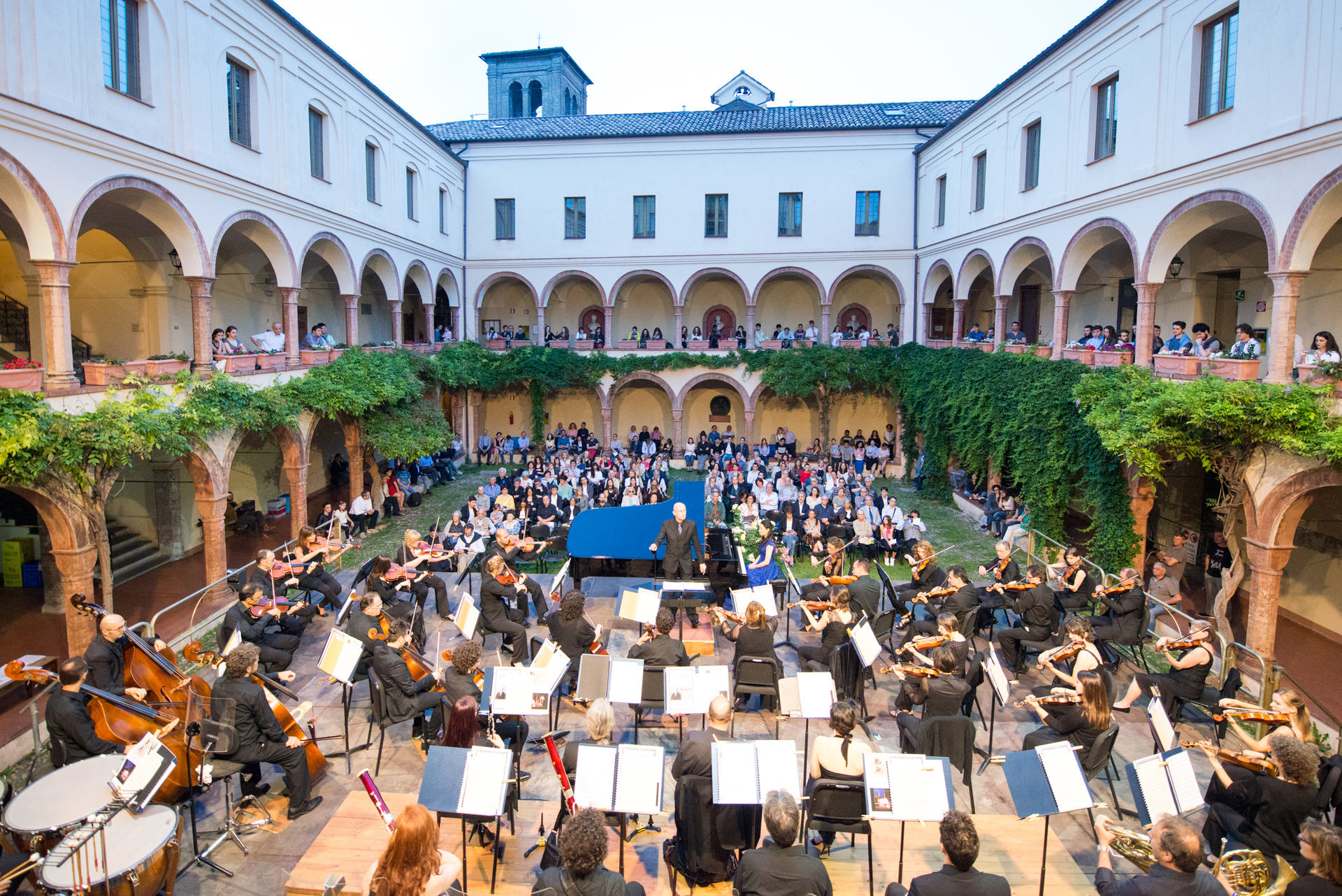
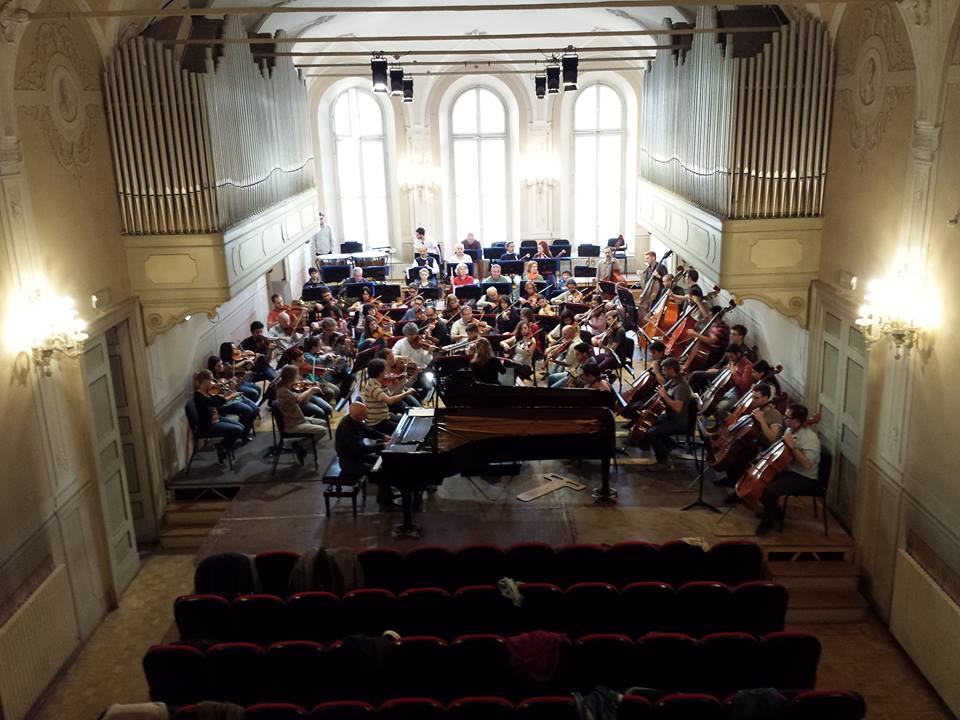
Concert Hall
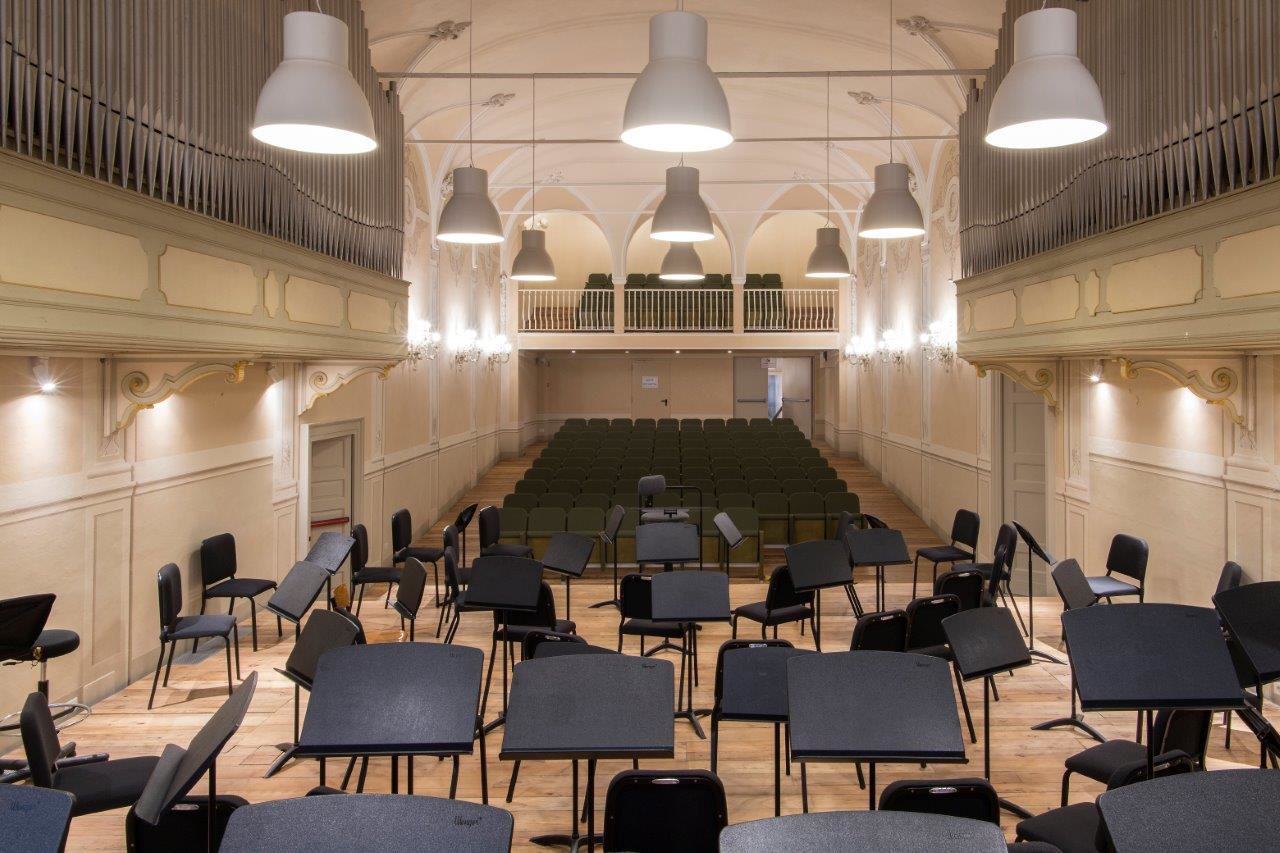
Concert Hall
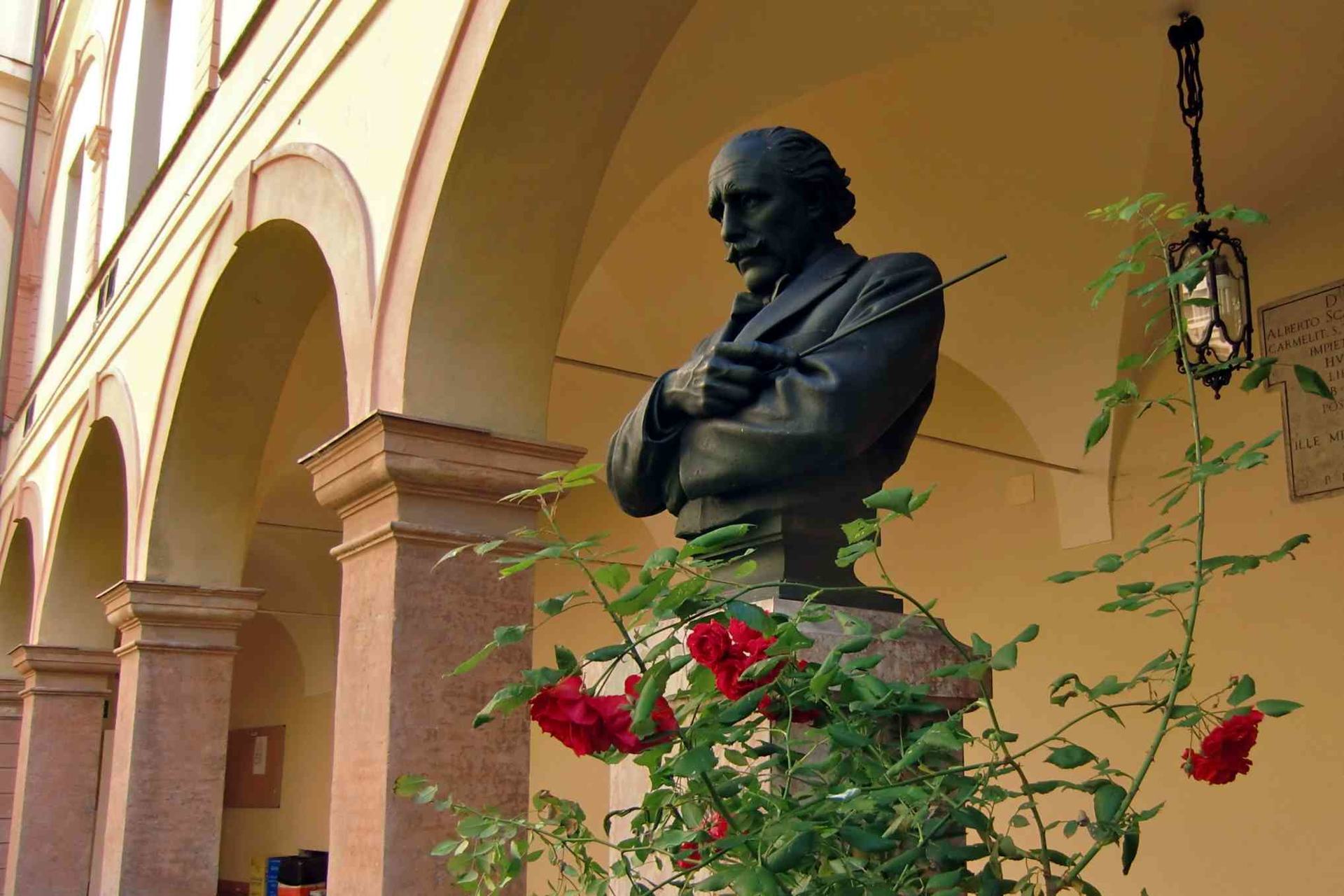
Arturo Toscanini

The Cloister
Auditorium del Carmine
Via Eleonora Duse, Parma
The transformation of a pre-existing place into a space for music is always a sort of miracle. The opening, after the adaptation works, of historic buildings, churches, industrial buildings (almost always saved by an inevitable abandonment destiny) often becomes an even more unexpected event than the inauguration of projects born from nothing. This is what happened to the Auditorium del Carmine, an austere and silent presence, for centuries placed next to the lively and resounding Conservatory, which now becomes a new meeting and cultural place for the city of Parma, almost reborn by the fresh vivifying energy of music. The fascinating space, defined by the gothic architecture frame, has been redesigned to allow the creation of a stage and an auditorium suitable for music performance, and the acoustic-opposed furnishings, with its technological profile, to the solemnity of the pointed arches - it has solved the many difficult problems of a variously segmented body with complicated and sometimes unpredictable sonic perspectives. The striking adjustable panels, constructed with the same pine wood as the case of the string instruments, can shape an imaginary harmonious container, which varies according to the type of music that will be performed. The first church and the first convent of the Carmine were built in 1273, thanks to the munificent donation of Lanfranco Bacchetti who left his possessions so that the Carmelite order, which was not present before, settled in Parma. Subsequently "The Senate of Parma, under the Provost of Giacomo Mandriano, obtained the license of the Senate of Milan around the year 1334, gave the aforementioned fathers the freedom to advance over the wall of the Parma Stream, with the object of being able to reduce the Convent and Church of greater perfection; and in more noble symmetry”. The bell tower was built in 1565, also with the competition of the Municipality of Parma. The main cloister of the convent was finally settled in 1583, like the sacristy erected in Doric order. The plan of the church is very irregular due to the later additions of lateral chapels, some Gothic, and others from the Renaissance, all more or less reworked in the Baroque period. The late-Gothic frescoes were torn, almost entirely, and placed in storage at the National Gallery. They generally testify to the Lombard influence - particularly of Foppa - and tended to exalt, even pictorially, the Gothic architecture of the vaults. They are all dated around 1480 or so. Fragments that witness a particular vitality, not only religious but also cultural. The Weigle organ of the Auditorium of the Parma Conservatory responds to a particularly interesting phonic criterion in its adaptability to any organ repertoire: the instrument, made by one of the great German organ builders, consists of 30 real registers arranged on 3 manuals and pedal on rigorously classical base according to the canons of the great Germanic tradition but tuned so as to be able to faithfully translate the various European organ repertoires. The location of the instrument, located in the church of the Carmine, now Auditorium, on a mezzanine above the entrance portal, faithfully follows, in turn, the original arrangement of the Nordic organs, in view of an optimal phonic performance. All this makes this organ a significant exclusivity in today's panorama of the music production of Italian conservatories, so it can easily accommodate Recitals of the most varied genres.

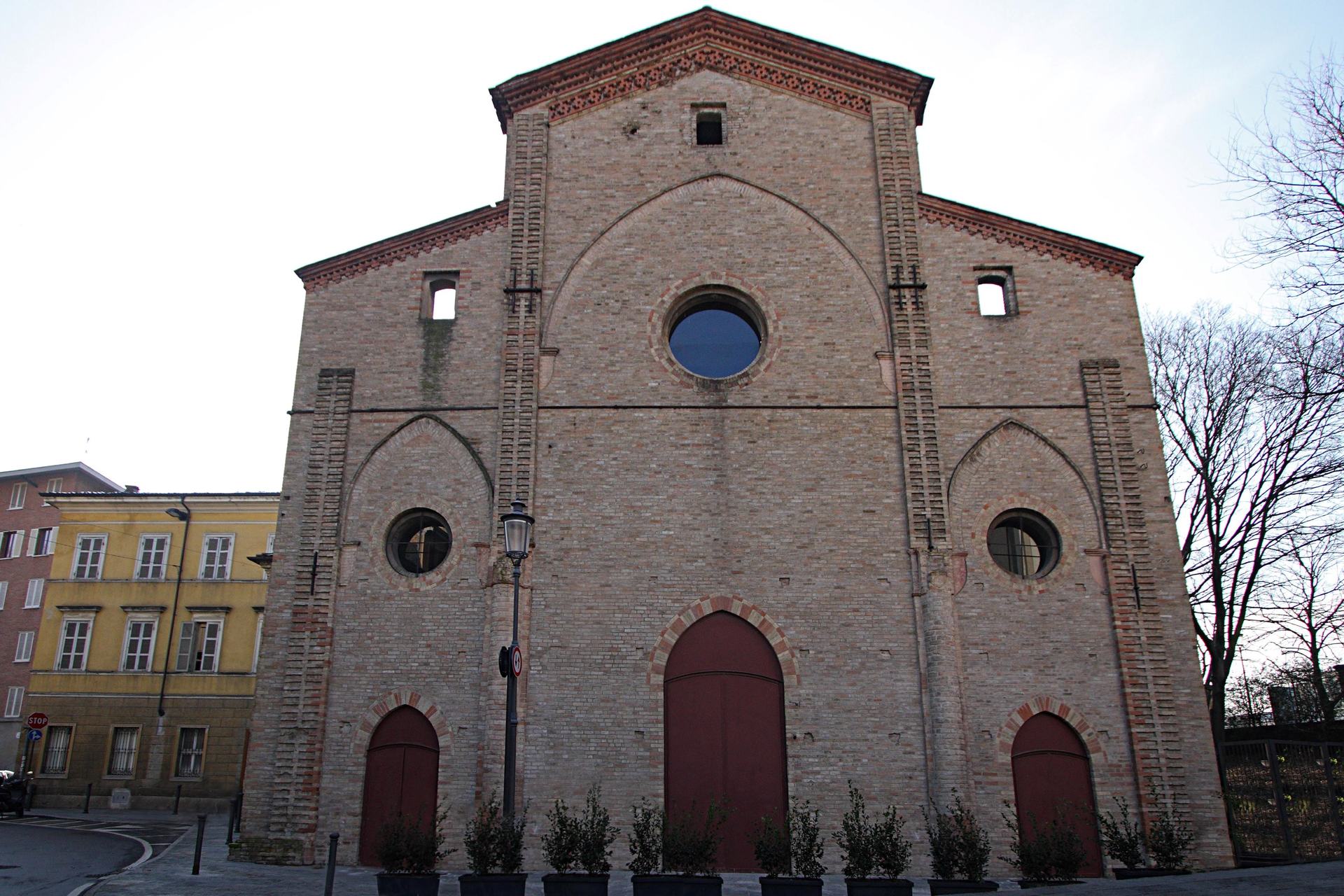
Outside

Inside

The ceiling
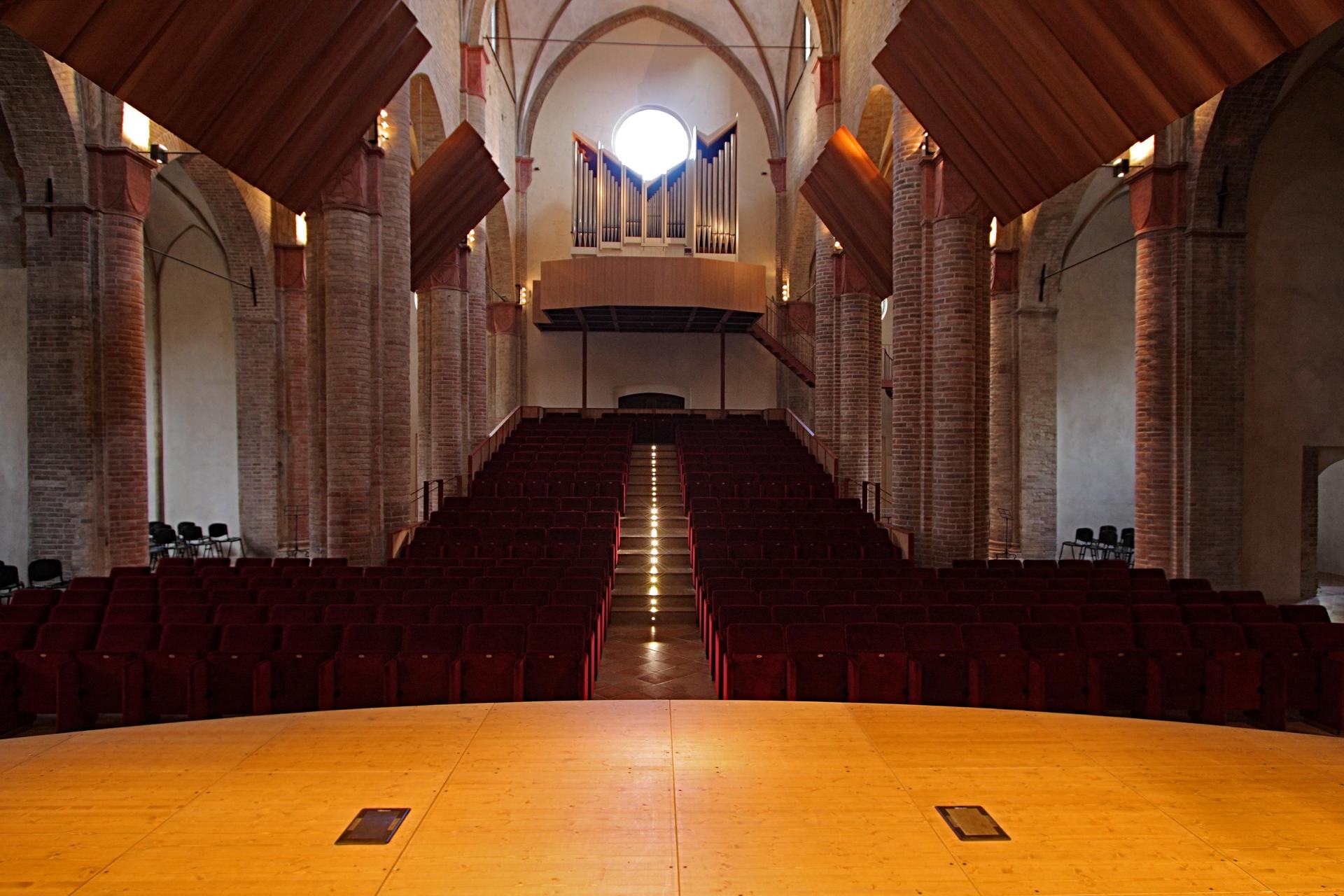
From the stage